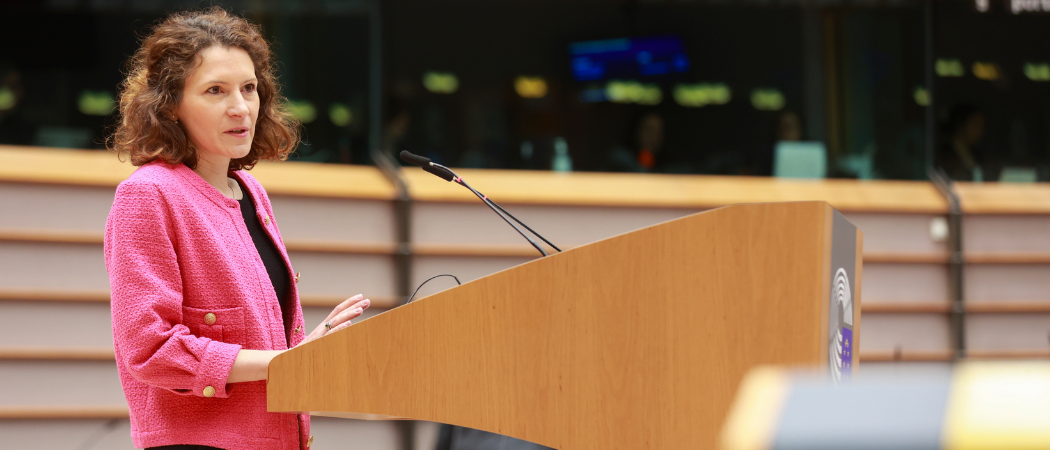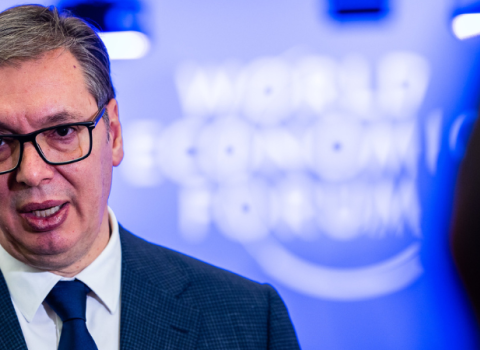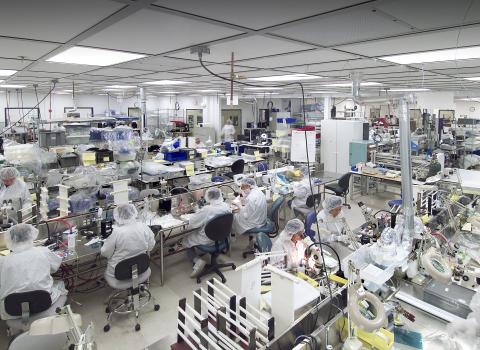Eszter Lakos argues for continued relevance of Widening and questions other gaps in Commission’s Competitiveness Fund plans

MEP Eszter Lakos, of the European People’s Party. Photo credits: Philippe Buissin / European Union
Hungarian MEP Eszter Lakos, a prominent voice on Widening in the European Parliament, has spoken out against the apparent marginalisation of the policy in plans for the next research Framework Programme.
“I really don't see innovation and research programmes without Widening,” she told Science|Business. Not only is Widening a political issue, she said, with strong backing from the states that benefit, but it aligns with the European Commission’s new focus on competitiveness.
“Competitiveness is not just about supporting the best of the best,” she said. “It's also the economics, the strength of the continent, of the EU together. And for that you also need the Widening instruments, whatever they will be.”
Lakos is a European People’s Party MEP who sits on the Parliament’s research committee. In January, she launched an informal Parliamentary task force focused on the Widening programme, which addresses disparities in research and innovation performance across Europe.
The aim of the task force is to ensure that the Widening principles are embedded across all areas and funding instruments of Horizon Europe's successor, FP10.
Widening is a contentious issue, with some EU states who do not benefit calling for its discontinuation. For instance, Denmark and Finland have argued in position papers that FP10 should no longer allocate funds to Widening. Even Estonia, which does benefit, has mixed feelings about the programme on the grounds that it creates a second class of countries in Horizon.
Fresh questions about the future of the Widening programme have arisen because it was absent from a chart detailing the structure of the proposed European Competitiveness Fund leaked earlier this month. The structure appears to bring several EU funding programmes together under a new governance structure, and while many Horizon Europe clusters are present, Widening is not.
Lakos is not alone in expressing concern. Anne Besnier, rapporteur on plans for FP10 at the European Committee of the Regions, has warned that a territorially-blind Competitiveness Fund or future FP10 risks undermining the local impact of innovation.
She argued that only a place-based approach can unlock the full potential of innovation ecosystems and ensure meaningful contributions to the European Research Area. “Under a new Competitiveness Fund, the financing of fundamental research and Widening measures would most probably suffer substantially,” she said in a statement.
Since the chart was leaked, Commission’s president Ursula von der Leyen has said that the next Framework Programme for research and innovation will remain independent but “tightly connected” to European Competitiveness Fund. However, she said nothing about the role of Widening in this new arrangement, nor the other programmes that were absent from the chart.
These include the European Institute of Innovation and Technology (EIT), research infrastructures and the Marie Skłodowska-Curie Actions.
Missing in action
Rumours about the possible scrapping of the EIT have circulated for some time, and its omission from plans for the Competitiveness Fund only heighten concern. While aware of criticisms directed at the institute, Lakos sees the EIT as a valuable asset.
“The EIT is a very complex instrument, but it has its strengths and added value at the European level, especially in creating pan-European ecosystems that are truly connected and organically organised,” she said.
Related articles
- Widening is working, but it is too soon to celebrate, say observers
- Parliament’s Widening task force joins calls for a standalone Framework Programme
There is, however, a need for evidence-based debate when assessing the EIT’s performance. “I often feel that criticism is based purely on personal experience, which is fine, but it should also be supported by data and analysis. Only then can we have a constructive and informed discussion,” she said.
Meanwhile, Lakos expressed concern over the potential threat to the autonomy of the European Research Council (ERC) if the structure in the leaked chart turns out to be accurate. “I would like to see more clarity. Basic research is barely visible here, it's treated too simplistically, reduced solely to the ERC,” she told Science|Business.
More generally, Lakos also concerns about the fragmented structure outlined in the leaked chart, questioning the lack of visible collaboration mechanisms between instruments, and the absence of a coherent, holistic approach, warning that disconnected pillars described in the chart risk undermining the fund’s overall effectiveness.





 A unique international forum for public research organisations and companies to connect their external engagement with strategic interests around their R&D system.
A unique international forum for public research organisations and companies to connect their external engagement with strategic interests around their R&D system.